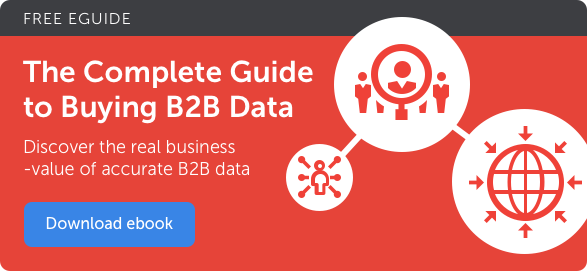With one in four smartphone users no longer making at least one voice call per week, is Generation Y really the end of the road for B2B telemarketing? Or, is it a case of marketers needing to use the right data, in the right way?
Millennials, a generation raised on instant messaging services and the proliferation of smartphone apps for everything from booking a taxi to catching up with friends. Because of this, Generation Y is often characterised as being reluctant to talk on the phone, something apparently borne out by the figures—according to research carried out by Ipsos Mori for Deloitte, the share of UK adults making one voice call a week dropped from 96% to 75% between 2012 and 2016.
In fact, for many millennials, unsolicited phone calls are something of a faux pas; one respondent to a 2013 Wall Street Journal survey describes phone calls as “an interruption”. For another respondent in their 20s “calling someone without emailing first can make it seem as though you’re prioritising your needs over theirs”.
Perhaps naturally, millennial’s reluctance in answering the phone follows them into the workplace—one-third of millennials prefer email for work communication, as opposed to phone calls, IM, and video. Add in the emergence of professional network platforms such as LinkedIn and it becomes apparent that many millennials see little value in using voice calls for B2B communication.
All of which paints a bleak picture for B2B telemarketers looking to generate leads from younger prospects, but there are means to overcome generational characteristics.
Relevance
Given the “always on” nature of modern business and the sheer levels of information we all process each day, nothing is more likely to turn millennials off than an unsolicited call from a business offering something they have no interest in.
Staying relevant means starting with data cleansing, by asking the following questions of your B2B database: is your data out of date, is any of it obtained illegally, is any of it incomplete or poorly formatted? Anywhere you’ve answered “yes”, data hygiene and enhancement is crucial.
Once you’ve ensured your data is of high quality, the next step is data profiling and analysis. This process will enable you to establish who you should be calling, by identifying important trends and characteristics. To give an example, you might analyse your database by industry sector or sub-sector, company size or job titles.
Millennials are possibly the best-equipped generation ever when it comes to making consumer and business decisions. A quick google will tell them all they need to know about you and they are uninterested in engaging with businesses that can’t meet their needs. So, make sure you’re only targeting people who have or are likely to have a problem that your business can fix.
The same logic applies for bought data lists; a reputable provider will work with you to create a targeted list that will enable you to form connections with the right people. The data in this list should be accurate, relevant and targeted at key personnel within the prospective business.
Target Decision Makers
This one sounds obvious but it can be easy to place too much emphasis upon generating a lead without considering its quality. Sometimes it can be beneficial to step back and consider who you’re speaking to.
Targeting the wrong person leads to a convoluted sales cycle at best and at worst, ruins your shot at generating a lead at all. Not only is targeting the wrong personnel less likely to generate worthwhile leads, it can also be detrimental to your brand and reputation.Being branded a time waster by millennials can be particularly damaging, remember this is the most connected generation in history and certainly not shy about sharing bad experiences.
Again, the key to this is good quality, well-researched data that’s been sourced with a good idea of who your customers are. Research can take the form of creating personas and profiling your customers, along with their needs, or simply culling anyone without the desired job title(s) from your data lists.
Whichever way you go about it, harnessing well-targeted data will get you speaking to the right people, help avoid the decision being passed up and down the internal hierarchy of your prospect’s business, and generate better quality leads.
Personalisation is Key
Once you’ve established that you are contacting people and companies who look like the right fit for your organisation and who are likely to be interested in your product or service, the next step is a little personalisation.
Millennials are inundated with 1,000s of marketing messages every day; as a result, most have an extremely low tolerance for anything contrived or inauthentic. So, to be successful, your business must find a way to cut through the noise and engage with the prospect on a personal level.
What does this look like in practice? You might call a prospect, address them by their name before steering the conversation to an issue that they are facing or are likely to be facing. The call should be helpful and informative and, crucially, all about the prospect, not your business and its offering. It’s only a little further down the funnel, in a subsequent call or calls, that you might broach how your products can help.
As with the previous points, quality data underpins the effective personalisation of your telemarketing. Without accurate and well-researched data, your chances of engaging the prospect on a human level, with information that interests them, are slim.
Use as Part of a Multi-Channel Campaign
Delivering a consistent message cross-channel, for example, by using email marketing or social media to support your telemarketing can be beneficial in several ways.
Firstly, it reinforces to your prospects why your business is a great choice from several angles, and done well, comes across as helpful and informative rather than cloying or, even worse, “selling”.
More importantly still, providing a helpful presence to prospects through, say, a targeted email campaign, can go a long way towards generating a perception of authenticity for your business—something that’s all important to millennials.
It can also go a long way towards “softening” your prospect before any call. Millennials like emails, more so than any other generation, so it makes sense to approach your prospects in this way. Augmenting your telemarketing with email can work well; after completing a call, you might send out an email that summarises the key points of your conversation and include case studies of other customers you’ve helped with similar problems. Alternatively, you could email the prospect before the call with helpful information.
There are, of course, a couple of caveats. First, this again relies on the quality of your data, if you’re not targeting the right prospects to begin with, no amount of email marketing will help. Secondly, the message must be consistently relevant, contextual and offer real benefit to your prospects. Few things are more annoying or kill a prospect’s interest quicker than a poorly targeted or irrelevant email.
In all these instances, the focus is on good quality data and relevance. Business owners and consumers are the most discerning they’ve ever been; it’s simple, if people feel that your organisation is helpful and responsive to their needs, they are far more likely to want a relationship.
Are millennials so different? While they may be more reluctant to answer the phone than their parents, they want the same things: services and products which are relevant to them, from businesses that have taken the time to figure out who they are and what they need.
The key to this is good quality data. Your data is what sets you apart from the competition; without high-quality data, you burn time and leads by using the wrong data to contact the wrong people, an approach unlikely to win millennials’ or anyone else’s business.
For more on the problems with poor-quality data, how to choose a B2B data provider, and what to do with your B2B data download our ebook.

